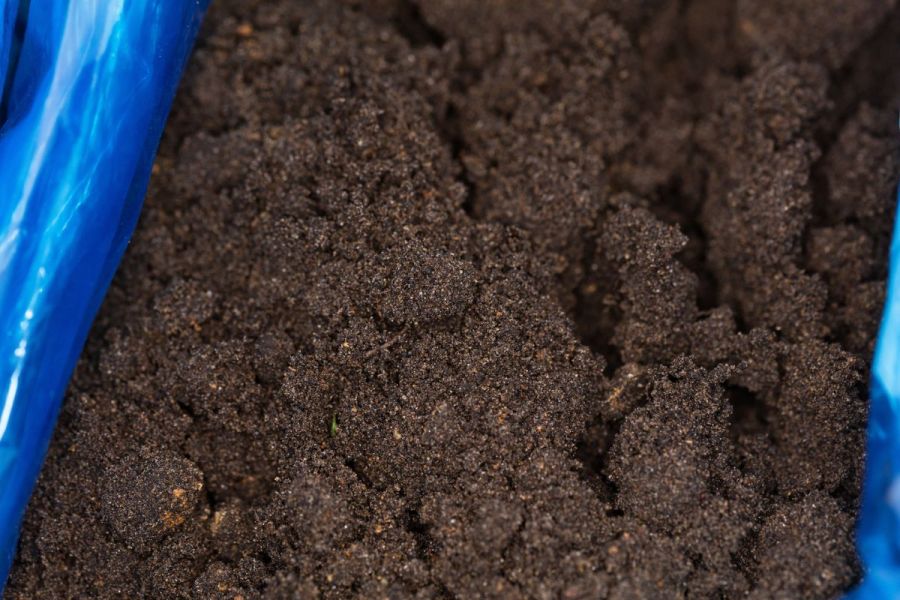As input costs remain high, precise application of fertilisers and using soil sampling data to guide rates will be essential for maintaining efficiency. CPM explores current attitudes towards testing and application regimes.
Farming is very much about de-risking the opportunity to fail.
By Charlotte Cunningham
With record-high fertiliser prices this season, many growers are taking a more precise approach to managing crop inputs to ensure every penny is being spent exactly where required.
Not only does this have a benefit financially, but better testing regimes and the use of precision application of key nutrients, like phosphate and potassium, is often linked to optimised crop performance – giving growers an opportunity to cash in on higher crop prices.
But to fine tune the approach, understanding what’s already in the soil is an essential starting point. In a recent CPM/ICL survey, 81% of growers revealed they test soil nutrient levels every three to five years, while 12% do so more frequently – every 12 months.

Full spectrum analysis allows growers to build a bigger picture of what’s in their soils, says Ian Matts.
When it comes to the type of analysis they do, 60% said they tend to carry out a standard testing regime, looking at P, K, Mg and pH, while a full spectrum sample is done by 31% of growers. So what’s the best approach? “The standard analysis is the minimum when it comes to soil testing,” explains Ian Matts, independent adviser at PDA. “It’s essentially a very useful starting point for those who want more information.
“In comparison, full spectrum analysis allows growers to build a bigger picture of what’s in their soils which is very useful. It’s not always recommended or necessary to do a full test every year, but it can be useful in some situations and on some soil types – particularly if growers are looking at the results in combination with tissue and grain testing.”
A full spectrum analysis for soils is often overlooked, but really the difficult bit is just the physical collection of the soil, reckons Ian. “Once you’ve got that, it’s easy to bolt different testing on to.”
ICL’s Howard Clark adds that having a greater understanding of the ‘bigger picture’ can help mitigate risk. “For me, farming is very much about managing risk. Therefore, the more data farmers have about the true status of the soils will help both them and their agronomist make decisions about the factors which will most heavily affect crop production.”

Grain testing is really useful because it completes the puzzle of nutrient application, says Tom Land.
Other types of nutrient testing can also be valuable, with 31% of growers stating that they also carry out tissue testing and a further 29% noting that they also opt to carry out both grain and tissue tests. So what’s the benefit of both? “Grain testing is really useful because it completes the puzzle of nutrient application and growers can use it to calculate factors like nitrogen use efficiency and nitrogen: sulphur ratios, for example,” says Tom Land, regional fertiliser manager at Agrii.
While grain testing is a ‘hindsight’ test, tissue testing is really useful for helping growers understand nutrient level status throughout the season and adapt accordingly, he adds.
Once an understanding of the soils is gleaned, then decisions can be made about fertiliser and nutrient applications. Though of course there are other factors that influence this, such as cost, – as seen over the past 12 months.
During that timeframe, 42% of growers said they’ve reduced both P and K applications, and 13% revealed that they’ve used no P/K fertilisers at all over the past year. In contrast, 33% said they had made no reductions. Turning focus to the reasoning behind cutting rates, cost was a determinant for 40% of growers, however more importantly, soils being at sufficient levels was the top reason for 59%.
“When prices are high, the mind automatically goes to making reductions to inputs,” says Ian. “But it’s important to remember that P/K isn’t quite the same as N. While taking a short-term holiday in some situations might be okay, maintaining adequate levels of both P and K is really important.
“It shouldn’t be forgotten that there are a large number of soils currently under target index – these will be the ones which fall off the cliff sooner if applications are overlooked or under-valued.”
He adds that it’s often a common misconception that P and K isn’t needed where soils are at the target index, but he advises growers to make sure that they’re reapplying whatever is being taken off.
Tom concurs: “Even if your last nutrient test showed your levels are where they should be, if we take a year like this year, potassium demand is likely to be at its highest since 2018. Crops have pulled up a lot of moisture through the soil and with that will have come a lot of potassium.”
With this in mind, for those who have taken a holiday or made significant reductions to application rates, Tom advises checking the impact of this next year. “This is particularly important for those growers who sample every three to five years and perhaps have only just done an analysis. I’d advise bringing that sampling regime forward and going in a year after, just for peace of mind.”
But whatever the rate or circumstances, with inputs on the rise and likely to stay elevated for some time according to experts, efficiency is key. This means making sure every bit of fertiliser is available to the plant, and this can largely be affected by application methods and the form of P and K fertilisers used, notes Howard.
According to the survey, 52% of growers use a P/K fertiliser compound blend, while 39% prefer separate nutrients. In terms of how they’re applied, more than half of growers (54%) said they broadcast P/K, while 33% use variable rate applications. Timing-wise, 62% target the spring, while 48% aim for the autumn.
Though just 19% of growers said they direct drill P/K, Tom reckons this approach could become more prevalent in an era of rising costs. “Not only does placing phosphate have huge financial benefits, but there are also agronomic advantages from an efficiency perspective.”
In terms of the ‘best’ timing, Howard says this will vary from farm-to-farm, and instead of targeting a specific date, he advises considering when the best time is to get on the land.
Delving deeper into the specific products used, taking top place on farm was alternative sources of P and K – such as digestate, slurry, farmyard manure and ash – which is claimed to be used by 63% of growers.
As the industry seeks to move more towards an integrated farming management system, Howard says it’s good practice to incorporate the use of both organic and bagged fertiliser. “Timing is important, however, as there are restrictions on usage of products at certain times.”
From an economic view, while any alternative sources are going to be an incredibly useful option going forward, Ian says it’s important to do the calculations in terms of nutrient status. “It’s not quite as straight forward as when it comes out of a bag.”
Use of alternative sources was followed in popularity by NPK/PK blend or compound at 42% use, triple superphosphate (TSP) at 38% and diammonium phosphate (DAP) at 35%.
Potash sources, such as ICL’s PotashpluS, are also worth considering, says Howard. “It’s a very good product to apply as it combines potash with Polysulphate and also contains essential minerals like magnesium and calcium.
“It can be direct drilled, and work we’ve done has also found that there’s a response from crops when applied in the autumn too.”
Sulphur also has a vital role to play in plant production, including being responsible for the formation of chlorophyll which is essential for photosynthesis.
Over half (55%) of growers said they use a nitrogen/sulphur compound source to hit their sulphur fertiliser requirements, and this has long been the go-to source of sulphur, says Tom. However, the recent closure of the CF Fertilisers plant at Ince – the UK’s largest domestic supplier of nitrogen/sulphur compounds – is likely to put pressure on supplies going forward. “The closure of the Ince plant means that domestic production of nitrogen sulphur compounds is non-existent, so many growers are now looking at alternative options,” he adds.
Among those alternatives is Polysulphate – the product of choice for 30% of growers, according to the survey. For those who are yet to come across it, Polysulphate is the brand name of polyhalite – a naturally occurring mineral – and comprises four major plant nutrients; sulphur, magnesium, potassium, and calcium, explains Howard.
“It’s mined in the UK by ICL at its mine in Boulby, North Yorkshire – the world’s first and only producer of polyhalite. Among its benefits, it also has an incredibly low carbon footprint, compared with other sources, and we know that this is something that is becoming increasingly important for farmers.”
Trial work carried out by ICL has highlighted that the sulphur release in Polysulphate behaves differently than nitrogen sulphur blends or compounds, which could be of benefit to growers, he adds. “Work at Nottingham University showed that there was a steady release of sulphate to the growing crop over up to 50 days, whereas other products like ammonium and magnesium sulphate release this much more quickly, lasting up to only about 12 days. Therefore, we believe it’s a far more efficient way of fertilising a crop.”
Mighty micronutrients
Though micronutrients aren’t needed in such big quantities, their value shouldn’t be overlooked, warns Ian. While 45% of growers said they don’t use any micronutrients with their base fertiliser, sources like manganese, boron and zinc were popular with others. “Cost is an understandable concern which puts some growers off and this shouldn’t be ignored – micronutrients have to provide good value for money.
“Full spectrum analysis will help identify where some of the potential soil weaknesses are which can better guide applications.”
Autumn advantages
When it comes to inputs, timing is key. Though the majority of growers (72%) said they don’t apply sulphur in the autumn, Howard believes there could be benefits…
“Based on the work we’ve done, I’d recommend that some sulphur is applied in the autumn, as well as in the spring,” he says. “Every time we’ve put sulphur on in the autumn, we’ve had a response – not just with regards to sulphur, but also increased N, P and K levels in tissues.”
Most recently, ICL looked at nutrient use efficiency in winter barley trials across six sites. Headline results from two years of data were that an application of 100kg/ha polysulphate in the autumn improved nitrogen uptake by an average of 27.88% (average extra 6.52kgN/ha); improved carbon uptake by 15% (40kg C/ha); sulphur and potassium uptake by 21% and phosphate by 41% – reinforcing the importance adequate available sulphur has on improving nutrient use efficiency.”
Winner announcement
Congratulations to our winner Martin Glenn from Lincolnshire who responded to the CPM/ICL survey on testing regimes and has won the fabulous prize of a Sencrop Raincrop rain gauge, worth £399, plus a one-year Essential plan.
Martin responded to the survey and completed the tie-breaker question, which asked respondents to explain why they thought it’s best to take a full spectrum soil analysis over a standard soil analysis. His answer was: “The full spectrum is giving you the full picture. Trace elements inclusion by tissue sampling is increasing the yield and the quality of the crop, with grain sampling analysing where we got it right and further refinement in the future to move forward,” which impressed the judges.
To take part in the next survey, make sure we have the correct details for you by emailing angus@cpm-magazine.co.uk
This article was taken from the latest issue of CPM. For more articles like this, subscribe here.




